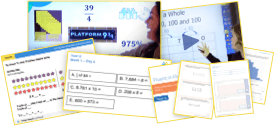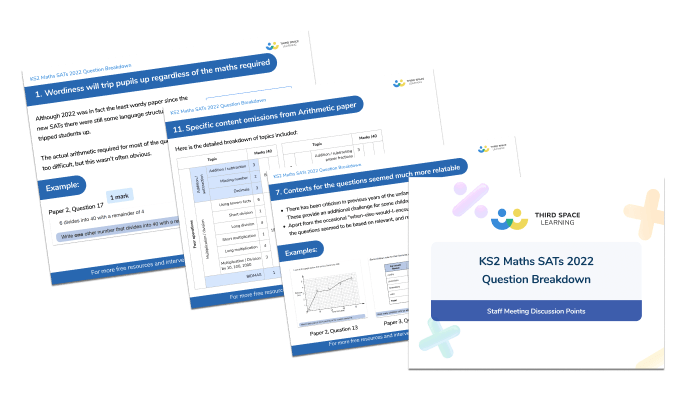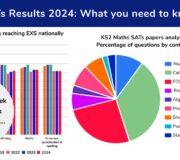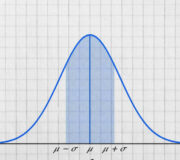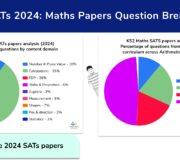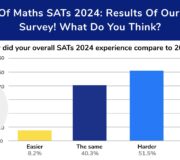KS2 SATs 2022: Maths Papers Question Breakdown
Originally published Monday 23rd May 2022
The KS2 SATs papers have been released, the SATs embargo cloud has cleared, and we can finally talk about the SATs 2022 maths papers in detail. Here, we join our popular author, Sophie Bartlett, as she takes us through a question level analysis of this year’s papers, questions and domain coverage.
Before we kick things off, it’s worth mentioning that the papers we’re about to explore are actually the postponed 2020 papers. This means no allowances for Covid gaps, unlike the 2022 GCSE maths papers.
See also: SATs 2024 and KS2 SATs 2023: Maths Papers Question Breakdown
- What to expect from this article
- Level of difficulty and cognitive demand
- Mixed response to the level of difficulty and cognitive demand
- Oh, my word! 2022 was the least ‘wordy’ set of SATs papers
- Only one 3-mark question across all papers
- Q17 seemed to be the ‘cliff edge’ this year
- The question image tripped up some children on at least 2 examples
- Allocation of 1 or 2 marks wasn’t entirely in line with expectations
- The proportion of questions testing Year 6 content has reduced
- Question structures
- How to score marks on the Arithmetic paper
- Topic coverage across all 3 papers
- Final reflections on the return of SATs
What to expect from this article
Well, Sophie has painstakingly analysed and pulled together the actual SATs paper questions and data from this year (and previous years!), as well as thoughts from the social media community along with her own impressions as a Year 6 teacher.
We’ll start with some general points, and then drill down into individual papers and questions. More of the examples are drawn from the reasoning papers 2 and 3 than maths paper 1 as that’s where the examiners excel at finding ways to concoct a question.
The information below is the detailed analysis that follows the raising of the DFE embargo on talking about any specific content on these national curriculum tests. It’s worth reading it in the context of our first article on the maths SATS 2022 looking at primary school teachers attitudes to the Key Stage 2 SATs tests and how prepared they felt they and their pupils were for the assessments this year.
As a one to one online maths tutoring business we’re only focusing on the maths papers here so I’m afraid if you’re looking for analysis on the English Reading test or the Spelling, Punctuation and Grammar (SPAG) test you will need to go elsewhere. (And if you find a good source, let us know and we’ll add it in!)
Level of difficulty and cognitive demand
Before we dive into the general picture for SATs 2022, let’s look back at Third Space Learning’s observations from the last couple of SATs seasons.
KS2 SATs 2018: Maths Papers Question Breakdown
“The level of difficulty has remained fairly uniform over the past few years… the last 3 questions on each of the KS2 SATs 2018 Reasoning papers continue to be the most challenging… The visualisation aspect of the cognitive domain was tested more frequently this year than in previous years”
KS2 SATS 2019: Maths Papers Question Breakdown
“The papers seemed to have ‘cliff edges’ in difficulty… The trickier questions in both 2018 and 2019 meant that children needed to be resilient and creative mathematicians to really succeed in the reasoning papers… The overall cognitive complexity of questions was higher than previous years… The level of spatial awareness and processing required was also high”
It’s this aspect of the SATs questions in the mathematics papers that tends to raise most commentary among teachers and school leaders.
Read more: What Are SATs?
Mixed response to the level of difficulty and cognitive demand
From discussions with colleagues and perusing reactions on social media, Year 6 teachers’ general impression this year was that the cognitive demand was quite high across these sets of papers.
However, many people also agreed that this was fair in regards to challenging those children who should be aiming for ‘Greater Depth’ in maths.
If you’ve also read Third Space Learning’s previous blog covering the maths SATs 2022 survey results, you will know that there were mixed reactions to this year’s set of papers.
Survey feedback covered a variety of interpretations, from difficult first questions and multi-step problems to content coverage in teaching , the school’s own Year SATs revision and the Covid context.
Whilst some people felt the maths SATs papers were fair…

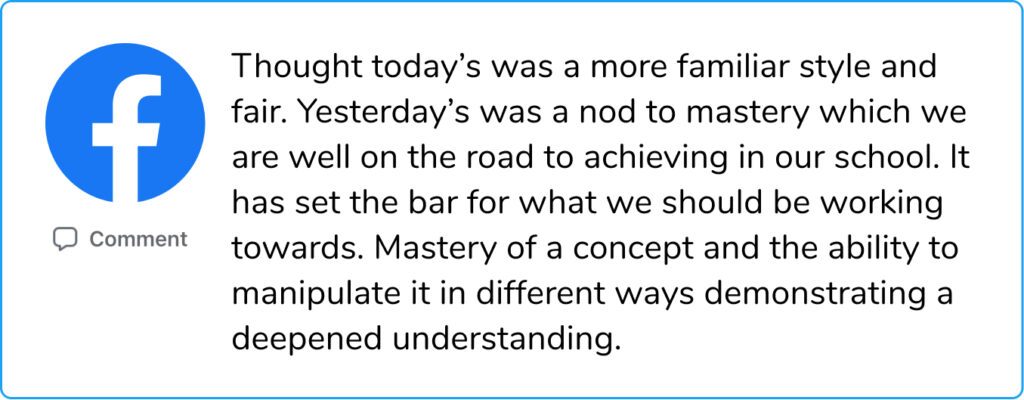

… others disagreed.
A common complaint was the number of words and the complexity of the language in the maths reasoning papers. This was certainly a dominant theme from survey respondents too!


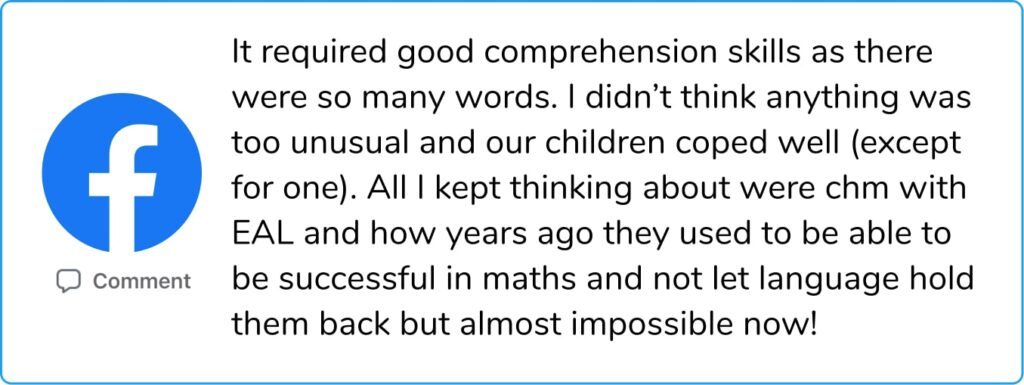
Oh, my word! 2022 was the least ‘wordy’ set of SATs papers
However, upon further analysis of the papers, this year’s set actually came out to be one the least ‘wordy’ overall! (And yes, I did check twice because I was so surprised…)
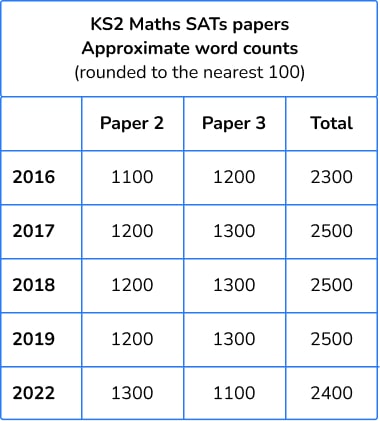
Perhaps people’s perception of the ‘wordiness’ of the papers was due to the complexity of the language and the maths ‘hiding’ behind it. The actual arithmetic required for most of the questions wasn’t too difficult, but this wasn’t often obvious. See Paper 2 Q17, worth 1 mark, as one example of this.

Maths SATs 2022 Question Breakdown: Staff Discussion Points
See the 15 lessons you should take from the 2022 KS2 SATs papers, including clues about what may come up in the 2023 papers to help you prepare!
Download Free Now!Only one 3-mark question across all papers
Paper 3 Q20 (the only 3-mark question) was a notably difficult question.

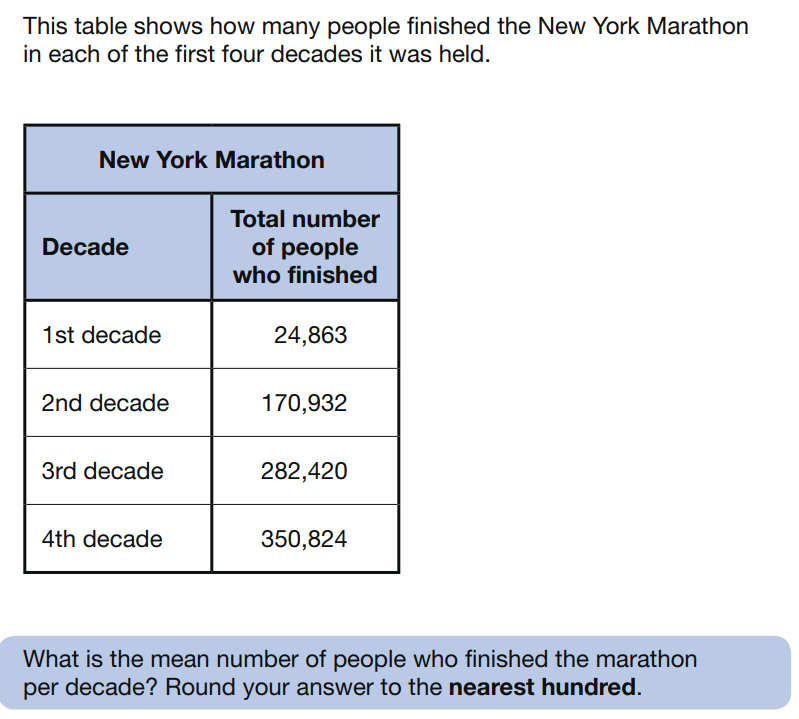
Having to find the mean (not only with very high numbers but with a division that created a remainder) and then having to round their answer was rather tricky. There are clearly 3 distinct steps here but, on top of the lengthy mathematical processes, the word ‘decades’ also seemed to throw some children.
Q17 seemed to be the ‘cliff edge’ this year
Combining both the year group content domain and cognitive demand of each question, both reasoning papers seemed to step difficulty up at around Q17.
The question image tripped up some children on at least 2 examples
The fact that lots of children got into difficulties with these questions shows us that they need constant reminders to answer the question they’re being asked, not what they think is being asked.
In the first example (worth 2 marks), when shown a picture of a cuboid, children are likely to expect a volume question.
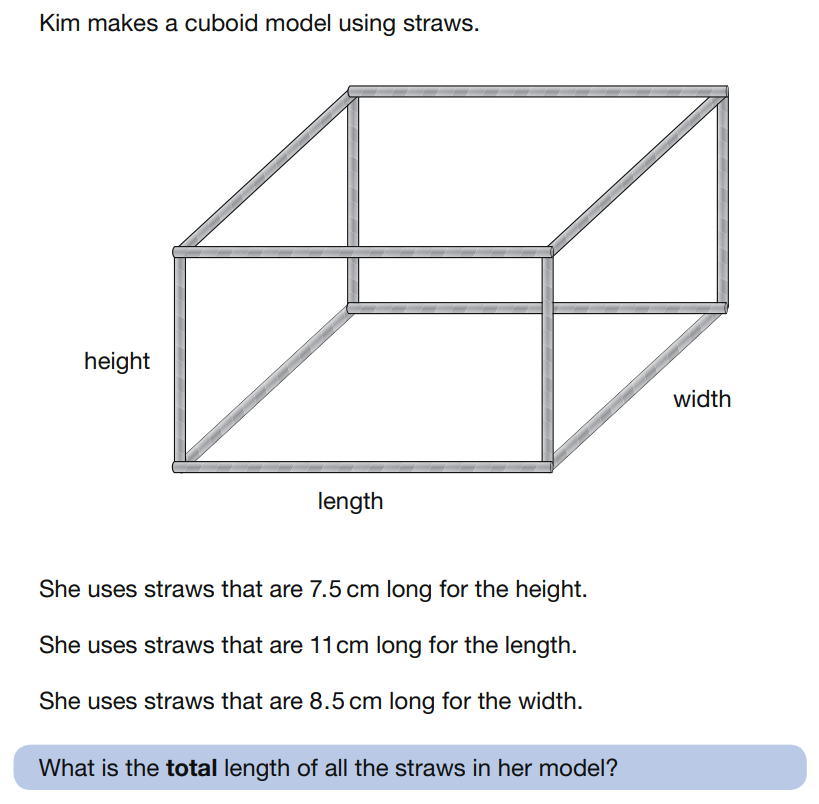
A cuboid presented in this way is likely to lead children to believe they would be finding the volume. I wonder how many Year 6s tried to multiply those three numbers together…

In the second example, as some teachers have since pointed out, the numbered labelling of the axes caused confusion when it came to the reflection of shapes.
The only position and direction question (Paper 2 Q25, worth 2 marks) caused a lot of controversy.
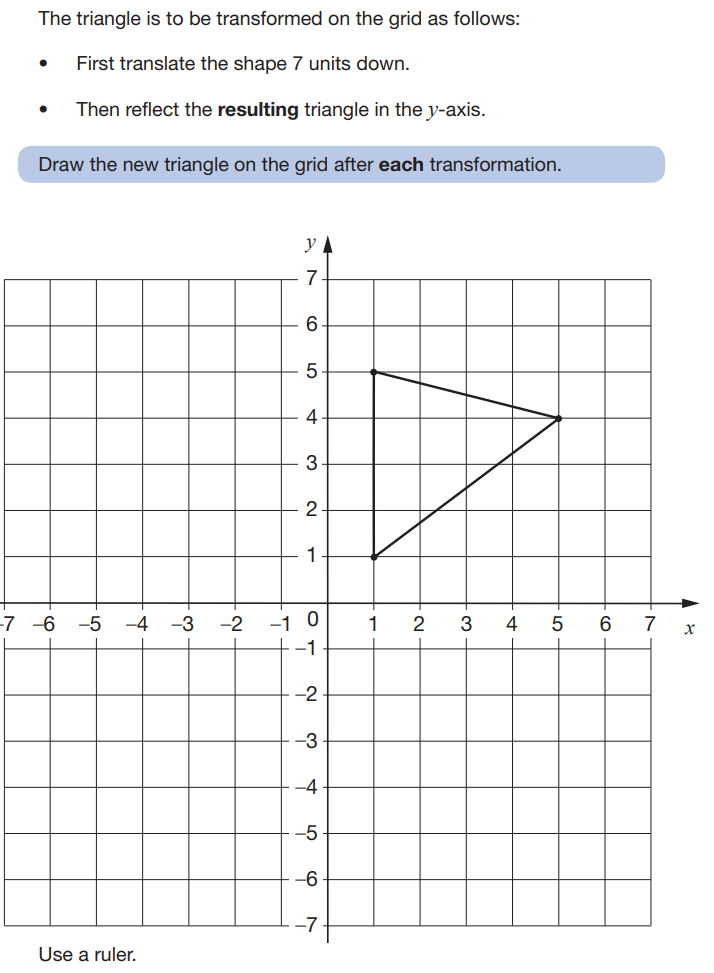





Reviewing the answer scheme for this question shows how easily children could have gotten confused. The reflection from A to B is misleading as it isn’t extremely clear that both triangles are one unit away from the y axis.
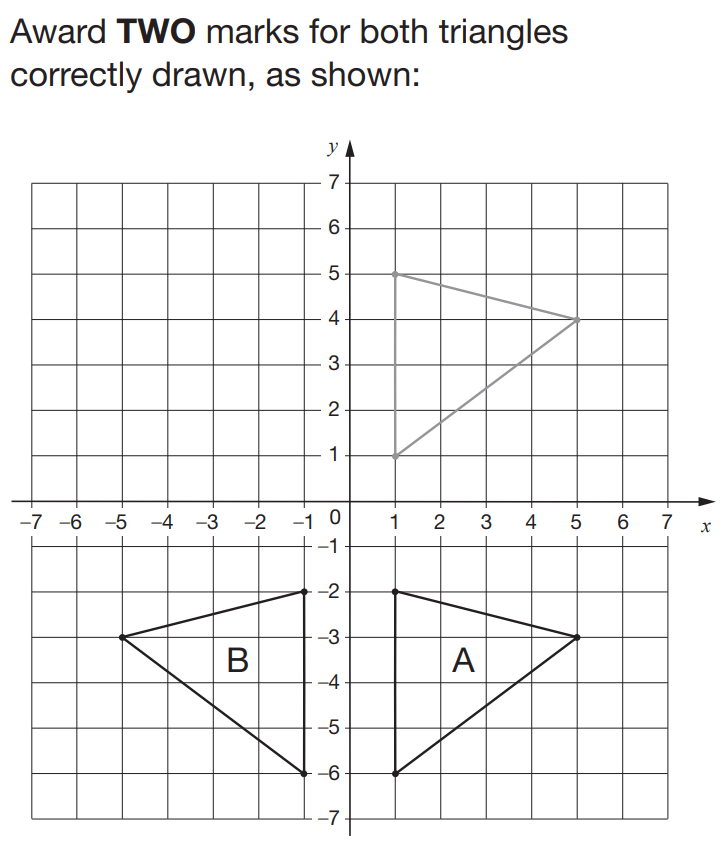
Allocation of 1 or 2 marks wasn’t entirely in line with expectations
Finally, another question which provoked a lot of discussion on social media was the last question of Paper 3.
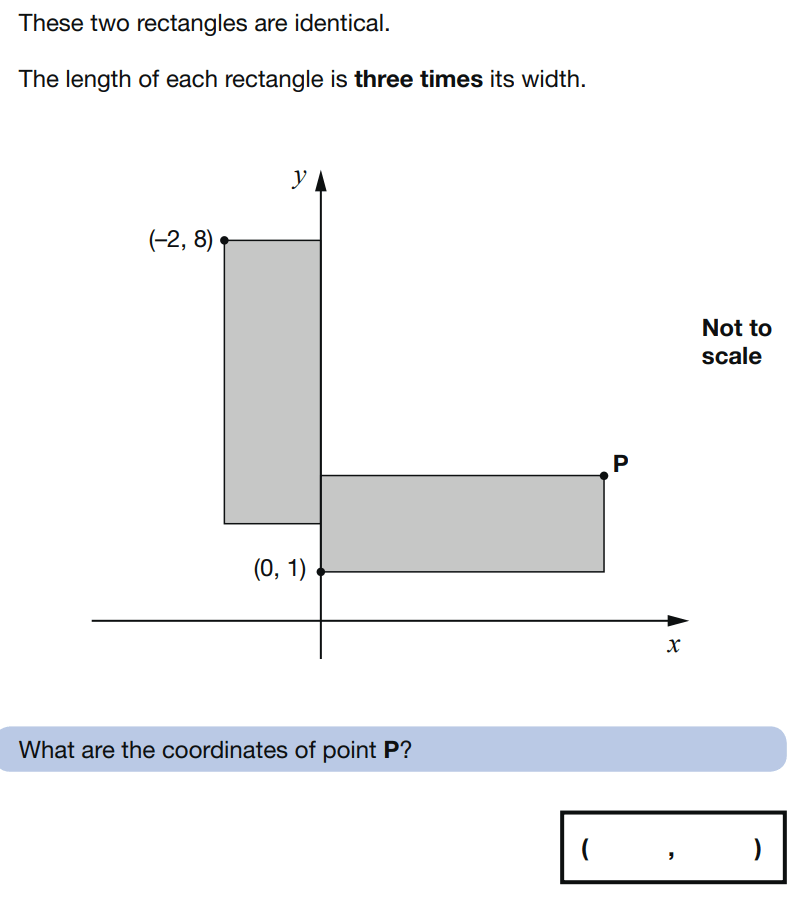
Many people argued that this question was too cognitively demanding to only be worth one mark.
Firstly, the children had to work out not only which measurement was the width (the shortest side of the rectangle), but how to measure it (the distance between the x coordinates, so 2 units).
The question specifies that the length of each rectangle is three times the width, which would mean the length is 6 units. Now the width and length are known, the coordinates of P can be calculated by adding 2 onto the y coordinate of (-2, 8) and 6 onto the x coordinate of (0,1).
The proportion of questions testing Year 6 content has reduced
In the mark scheme, the content domain for each question is labelled. See below for an analysis of which questions were based on objectives from which year group’s curriculum.
Interestingly, a lot of the content tested here is from Year 5, a term of which this cohort would’ve been in lockdown i.e. homeschooling. It will be interesting to see if this has had any impact.
Further reading: 2016 Key Stage 2 Mathematics Test Framework
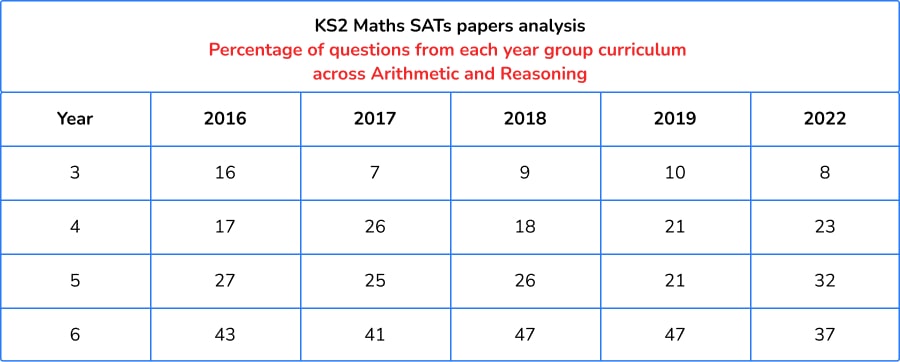
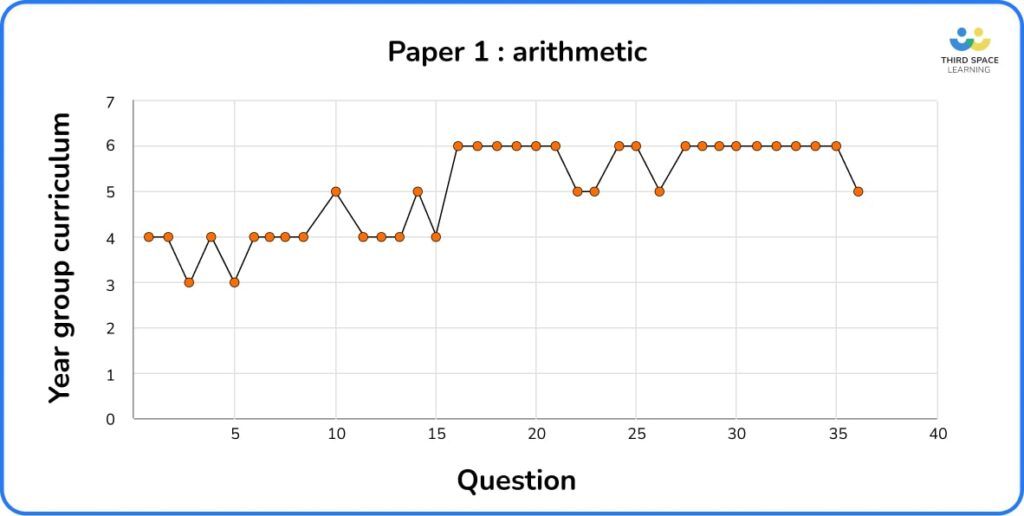
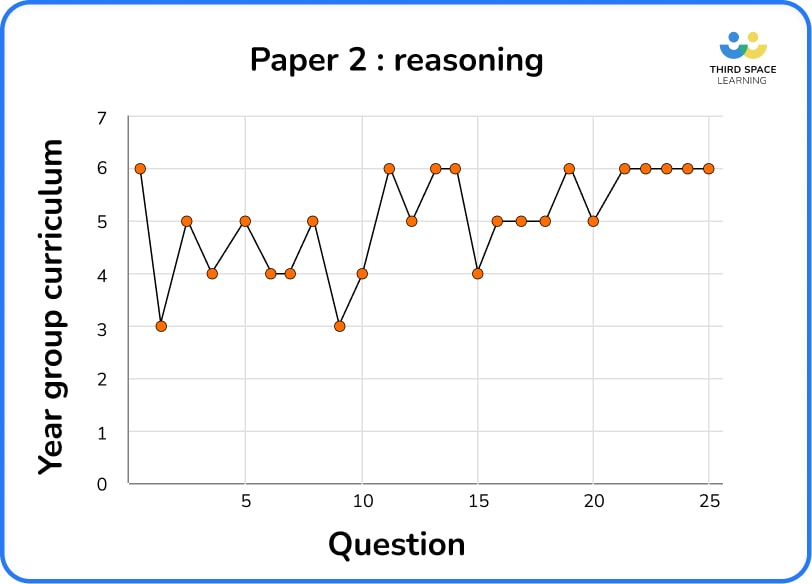
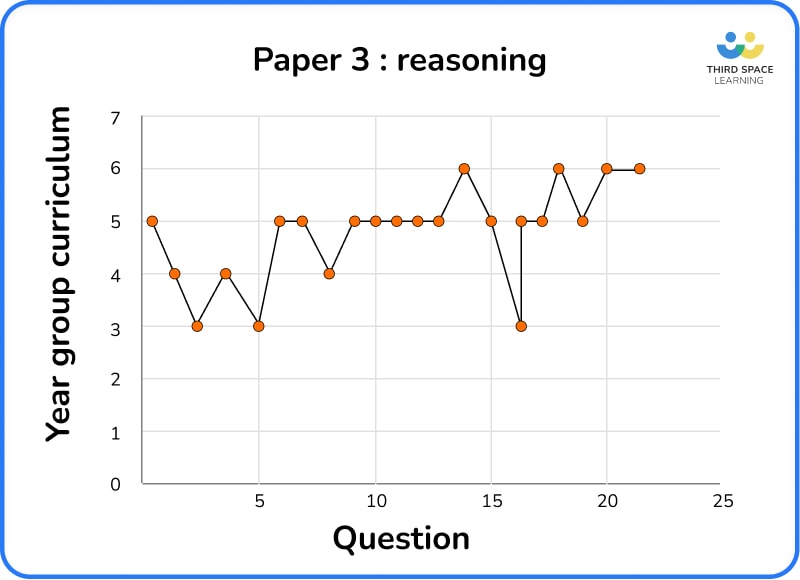
Although the papers are still weighted towards Year 6 maths content, in previous years, we have seen it be possible to ‘pass’ (or almost pass) without knowing the Year 6 maths curriculum at all. The scaled scores are yet to be released this year, but if the pass mark remains at a similar level (between 52-55%), then the same can be said for this year as the content from Years 3-5 is higher than ever before.

Remember, these papers were originally intended for 2020. Therefore, it could not be possible for the test writers to make any adjustments because of Covid ‘gaps’.
Question structures
Contexts for the questions seemed much more relatable
There has been criticism in previous years of the unfamiliar contexts used by the question setters. These provide an additional challenge for some children.
Apart from the occasional “when-else-would-I-encounter-this-but-a-SATs-paper” question (such as the straw cuboid question referred to above), most of the questions seemed to be based on relevant, and relatable, contexts this year!
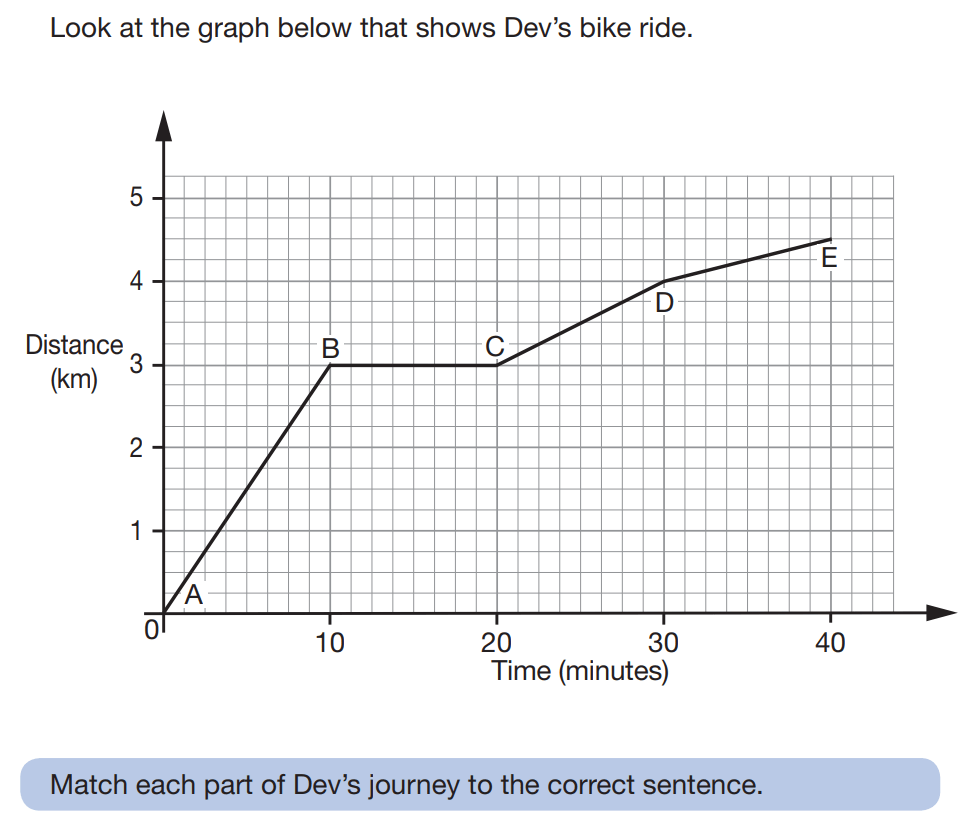
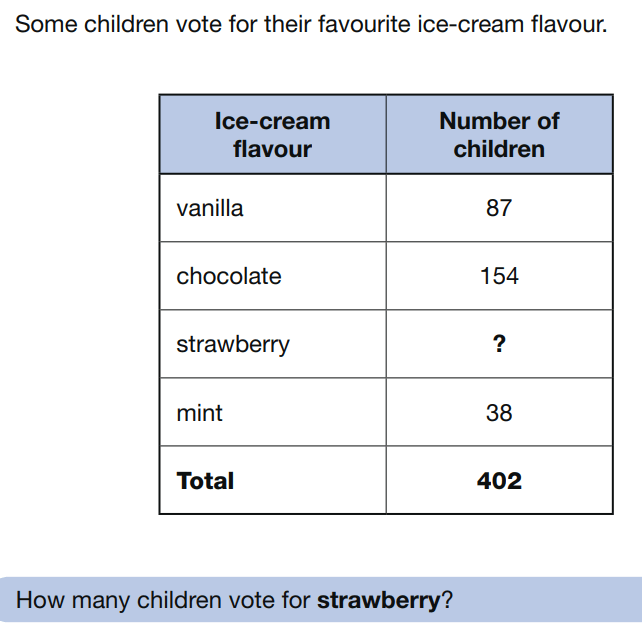
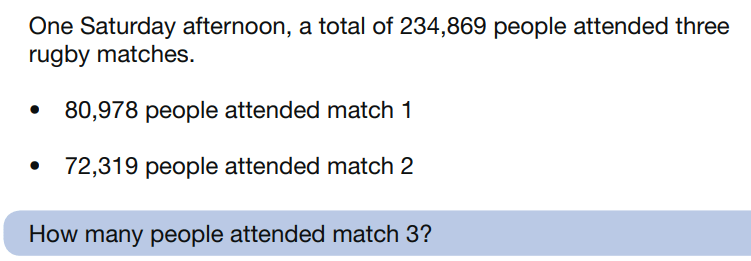
Just like the old favourites in 2019, another “how much change” question appeared in Paper 3.
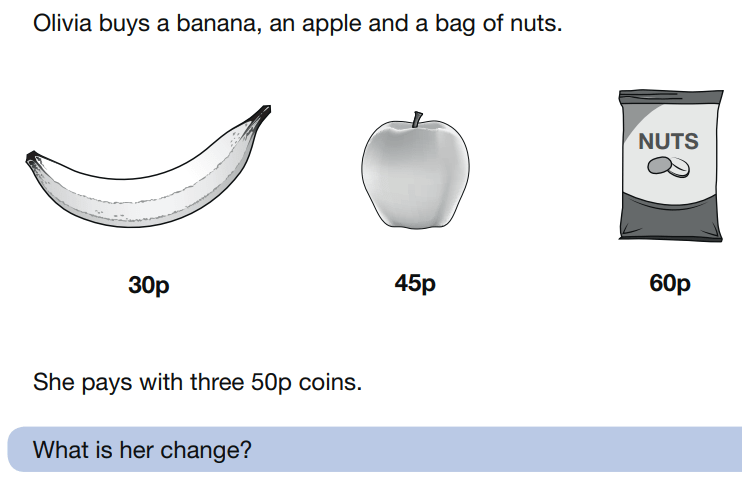
Question setters showed an impressive ability to over-complicate
Paper 3 Q12, worth 2 marks, was an unusual way of presenting what was essentially a basic mathematical procedure.
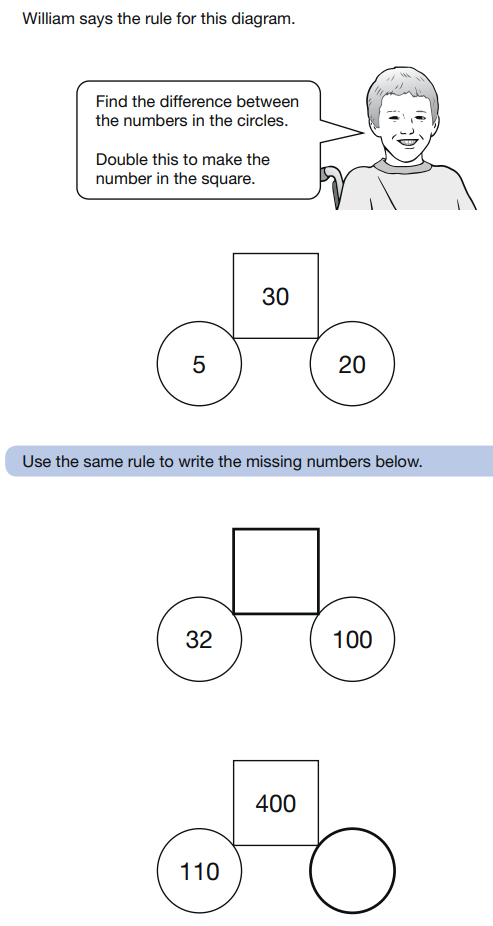
3-mark question included only right at the end of Paper 3
By now we know there will always be a 3-mark question. In this case, it was the penultimate question of Paper 3 (the ‘mean’ question discussed earlier).
How do you prepare children for a 3 mark question? My approach is to firstly check the children understand that the more marks a question is worth, the more steps it is likely to require. With a 3-mark question, it is probable that there will be at least 3 steps (sometimes 4). I encourage the children to show each step of their working clearly in the method box as each step alone may well be worth a mark!
KS2 SATs 2018: Maths Papers Question Breakdown
“The 3-mark question is here to stay”
KS2 SATS 2019: Maths Papers Question Breakdown
“The 3-mark question moved! As implied in the test framework, it is likely that a 3 mark question – a feature only introduced in the new style SATs – is likely to appear once each year in either Paper 2 or Paper 3. (Interestingly, in 2019 the 3-mark question came in Paper 3, rather than Paper 2 like it had in previous years)… The amount of work required for one or two marks was higher than previous years”
How to score marks on the Arithmetic paper
Most of this article has been looking at questions from the Reasoning paper as that’s where the structure of the question can be as complex as the maths required.
However, given how many marks are likely to be required for a scaled score of 100, high marks scored on the Arithmetic paper can often carry a child through to the expected standard.
Detailed breakdown of topics required for SATs Arithmetic paper
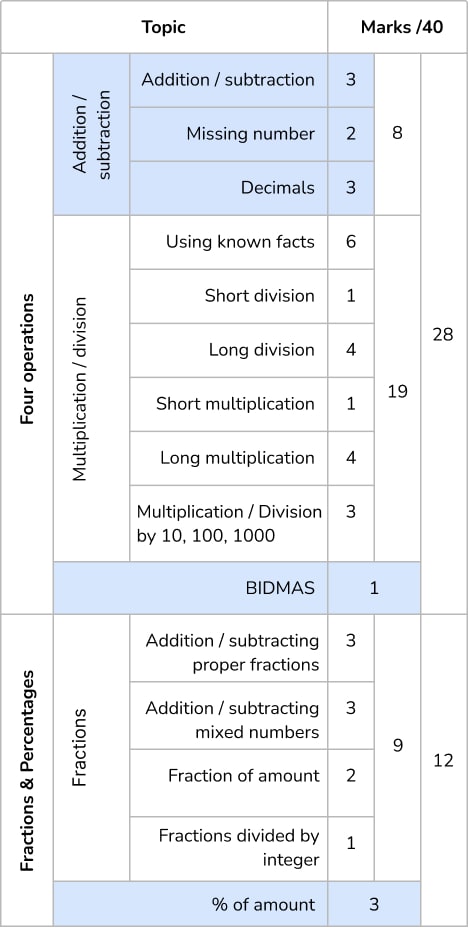
Missing topics from this Year 6 arithmetic test that we can expect next year:
- multiplying a fraction by a fraction;
- multiplying a mixed number by an integer.
‘Answer = question’ is as important to recognise as ‘question = answer’
As in previous Arithmetic papers, the ‘answer’ box was presented before the equals sign as well as afterwards (children seem to often be exposed to the question format of question = answer).


Questions of the same type increased in difficulty over the paper
Let’s see this in action in the table below!
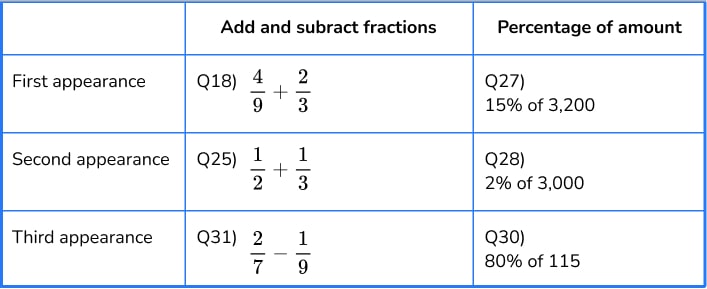
True maths fluency was required for Arithmetic as well as Reasoning
As expected, no change here – children who struggle with mathematical fluency would have found all the papers challenging.
In the Arithmetic paper, Question 34 also seemed to throw some children. Where children had systematically learnt how to subtract two mixed numbers, subtracting a mixed number from an integer separated those who truly understood the mathematical procedure involved.

If you’re looking to improve pupil maths fluency beyond SATs, why not try Third Space Learning’s most popular resource, Fluent in Five! This daily scheme helps to build arithmetic skills through regular daily practice.
Topic coverage across all 3 papers
What were Third Space Learning’s predictions from the last SATs season?
KS2 SATS 2019: Maths Papers Question Breakdown
“Some surprising areas returned (mean and volume – may be omitted next year)”
“We can make some predictions, and there is a strong chance that we will see the following types of questions next year:
– Calculating time durations/difference and/or interpreting clocks;
– More conversions of units of measure;
– Interpreting complex scales;
– Negative numbers (as this was only lightly tested this year);
– Estimation;
– Translations where co-ordinates and the translation only are given, without a grid;
– Calculating with unknown angles (using shape properties);
– We should also expect roman numerals to make a reappearance”
Summary of the missing content in SATs 2022
The content domains for each question are detailed on page 4 of the mark scheme. According to the listed domains, the following areas were missing from this year’s papers.
- Number and place value: counting in multiples (N1) and number problems (N6)
- Calculations (four operations): estimate, use inverses and check (C3)
- Fractions, decimals and percentages: comparing and ordering fractions (F3); fractions/decimal/percentage equivalence (F11); and solve problems with percentages (F12) (don’t be misled by Paper 3 Q18 – this is actually a ratio question: using percentages for comparison (R2))
- Ratio and proportion: scale factors (R3) and unequal sharing and grouping (R4)
- Algebra: generate and describe linear number sequences (A3) and enumerate all possibilities of combinations of two variables (A5)
- Measurement: estimate, measure and read scales (M2); telling time, ordering time, duration and units of time (M4 – Third Space Learning thought this may appear as it was missing from the 2019 paper); convert metric/imperial (M6); perimeter, area (M7); and volume (M8 – Third Space Learning predicted this would be omitted this year!)
- Geometry – properties of shapes: describe properties and classify shapes (G2)
Some other notable, and more specific, omissions were Roman numerals (5N3b – not mentioned above as other objectives in content domain N3 were covered in this test) and drawing/measuring angles using a protractor (5G4c – again, not mentioned above as other objectives in content domain G4 were covered in this test).
After the 2019 SATs, Third Space Learning predicted these areas would appear – and they did.
- More conversions of units of measure
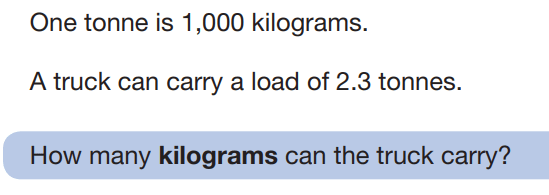
- Negative numbers (as this was only lightly tested in 2019)
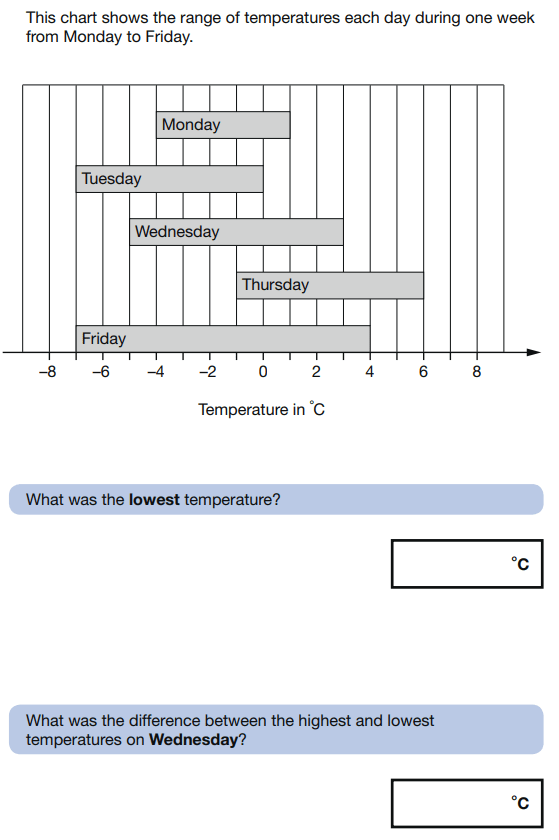
- Calculating with unknown angles (using shape properties)
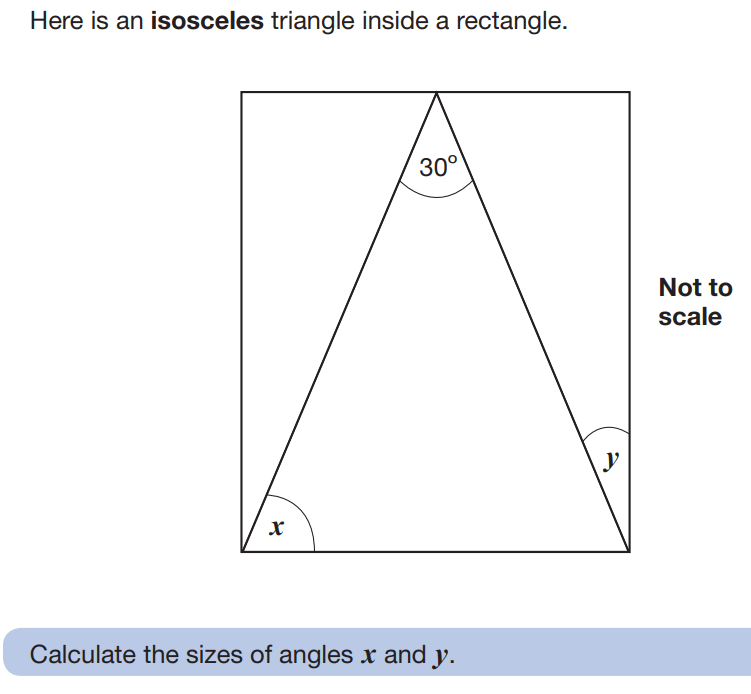
Third Space Learning’s online tutors work to cover all elements of the KS2 curriculum, so if you would like to find out how they can help plug gaps in all of the areas above, get in touch with us today.
Content domain breakdown across all 3 papers shows a big emphasis on calculations
An updated comparison grid of the content domain coverage in all the maths SATs papers so far shows quite a hike in the proportion of calculations questions; this was really clear as there did seem to be a lot of multi-step four operations questions.
The topics of algebra, measurement, geometry (both shape and position & direction) and statistics had the least amount of representation in this year’s papers than they’ve ever had before.
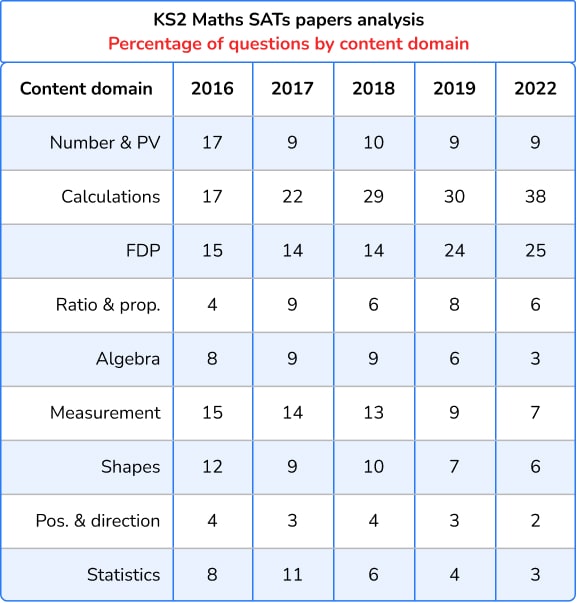
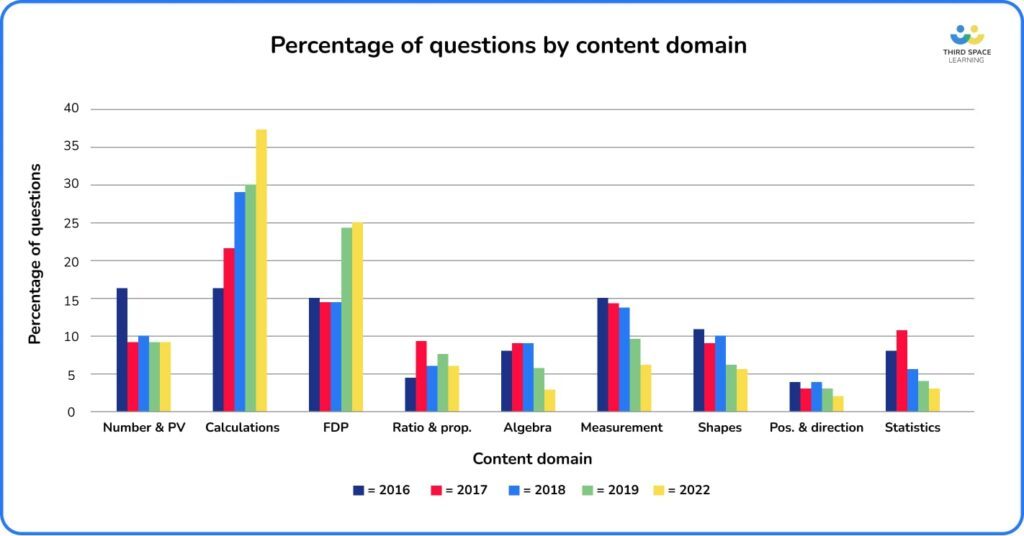
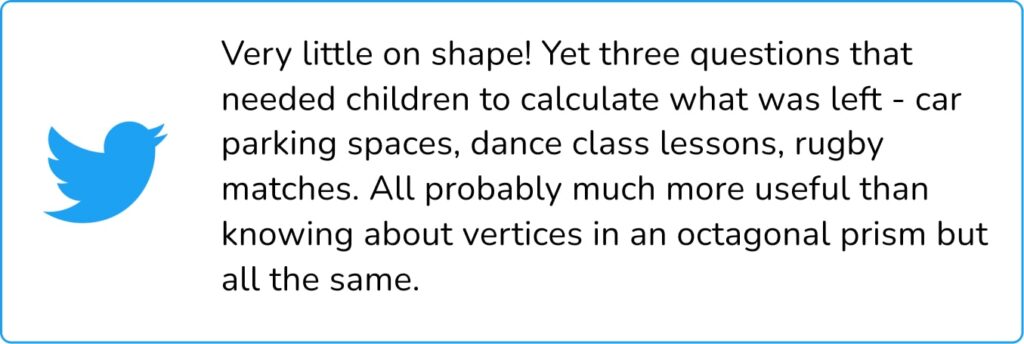




Are you there, Chen?
Since the introduction of the new curriculum, Year 6 teachers’ favourite, Chen, first made an appearance in the 2016 sample paper. He returned in 2017 and hasn’t appeared since… until now!
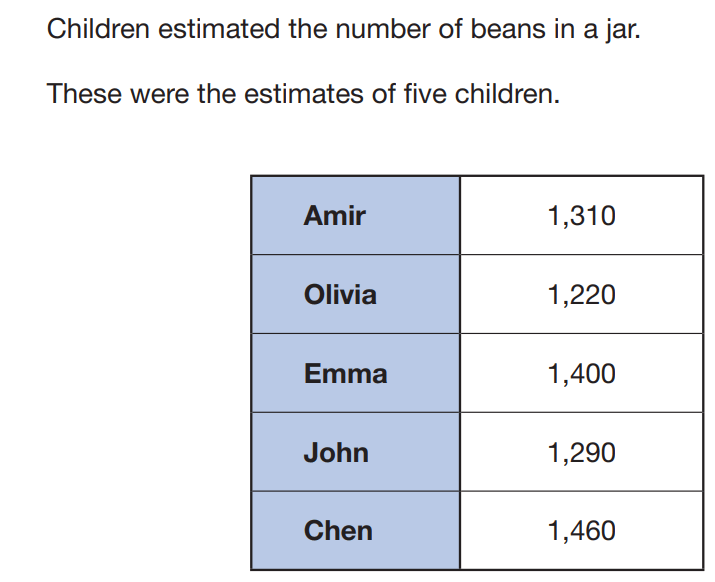
However, this subtle reference to Chen did not please everyone…!

Final reflections on the return of SATs
After three years of reprieve, the ‘return’ of the SATs exam may have come as a bit of a shock to us all.
Trying to fit the curriculum in (or not, in many people’s cases) before May proved even trickier when there were so many other gaps to plug. Whether the pass mark is lowered or not this year remains to be seen, and will be very telling…
Taking into account what was predicted for this year, and what was missing from this year, we could assume that a number of topics would be likely to appear in the 2023 SATs.
- Estimation
- Time
- Drawing and/or measuring angles using a protractor
It will be interesting to see whether the high proportion of calculations questions is here to stay or whether the content domains are a little more evenly spread next year.
While we may all be ready to collectively sigh and think ‘thank goodness that’s over!’, please remember that maths learning does not stop at SATs!
For those of us that haven’t taught the entire curriculum yet, there is still much yet to cover. For those that managed to fit everything in before, now is the perfect time to consolidate and extend the children’s learning to make sure they are as fully prepared for secondary school maths as possible.
Asking secondary maths teachers what they wish Year 6 children would come to Year 7 confident in produces almost exactly the same answers every time; fluency in times tables and related division facts, four operations, multi-step word problems and fraction/decimal/percentage equivalence.
So keep it up, comrades… the end is nigh!
Further reading:
- After SATs Lessons: 5 Golden Rules for Year 6 Teachers
- SATs Success Stories From The Third Space Learning Family
- End of Year 6 Maths Test: covers just year 5 and year 6 maths topics
- SATs results 2023
- KS2 Year 6 Past SATs Papers From 2016-2023
- Free Year 6 SATS Maths Papers
- The Best Year 6 SATs Practice Papers: Available As Free Downloads
DO YOU HAVE STUDENTS WHO NEED MORE SUPPORT IN MATHS?
Every week Third Space Learning’s specialist primary maths tutors support thousands of students across hundreds of schools with weekly online 1 to 1 maths lessons designed to plug gaps and boost progress.
Since 2013 these personalised one to one lessons have helped over 150,000 primary and secondary students become more confident, able mathematicians.
Learn about the SATs revision programme or request a personalised quote for your school to speak to us about your school’s needs and how we can help.
